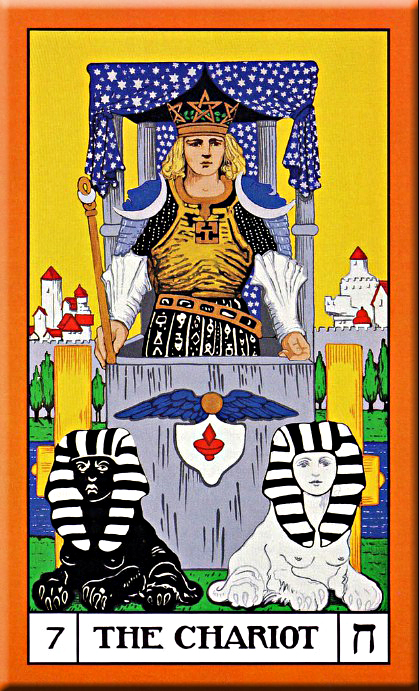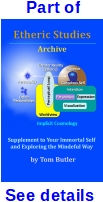
Seeking 101
Also see:
The Hermes Concepts
Metaphysical View of John 14
The Razor’s Edge – Katha Upanishad
The One Thing
Christmas is for Compassion
 The need to consciously seek understanding about our spiritual nature, the nature of the reality we inhabit and our relationship with reality, has been known at least since the time of the Egyptian Hermes, some 6,000 years ago. Spiritualists know today that recognizing and understanding our actual nature and living in accordance with that understanding is the intent of religion. (NSAC Declaration of Principles, Number 3)
The need to consciously seek understanding about our spiritual nature, the nature of the reality we inhabit and our relationship with reality, has been known at least since the time of the Egyptian Hermes, some 6,000 years ago. Spiritualists know today that recognizing and understanding our actual nature and living in accordance with that understanding is the intent of religion. (NSAC Declaration of Principles, Number 3)
Emerald Tablet
One of the earliest expressions of our actual nature comes from the Emerald Tablet, (1) which is credited to Hermes. The original message has likely been corrupted by later translations, but it remains important because it indicates the ancients understood their spiritual nature long before the text was written.
The original title of the Emerald Tablet was probably something like The Truly Great Work because it shows Hermes explaining to students that The Great Work is accomplished by understanding The One Thing. The One thing is the manifestation of Source or Infinite Intelligence as the expression of organizing principles (Natural Law).
You will be familiar with the Hermetic concept of transmuting a coarse personality (lead) into a spiritually mature person (gold) as spiritual alchemy. This transmutation is The Great Work. It is accomplished by the seeker coming to understand the actual nature of the world and learning to live in accordance with that understanding.
The main points of the Emerald Table are expressed in Lines 1, 2 and 6:
1. It is true and no lie, certain and to be depended upon, that which is above is as that which is below; and that which is below is as that which is above, for the performance of the one truly great work.
2. And as all things are from only One Thing, by will of the one God, so all things have their origin in this one power, by adaptation to their individual purposes.
And
6. That only One Thing is the true father of all things in the universe. Its power is integrating or perfecting after it has been united to a spiritualized Earth.
The “One Power” is the Creative Process (2) with which reality is adapted (by you and me as spiritual beings) to realize visualized purpose. I define the Creative Process as attention on an imagined outcome to produce an intended order. This process is bound by the Organizing Principles (3) emanating from Source. Spiritualists know the integration of Source with the expression of organizing principles, as Infinite Intelligence.
“The only One Thing” is the principles governing the behavior of reality. They are popularly known as Natural Law and are described in the Emerald Tablet as the Father of all things. We represent the Earth in this lesson. It is through our increasing understanding that we better align our expression with the actual nature of reality.
The Katha Upanishad
A second reference telling us that our purpose is to gain understanding of organizing principles is from the ancient Hindu Vedic Sanskrit text known as the Katha Upanishad. (4) It was written around 4,000 years ago, based on oral tradition of the Hindus Valley civilization. It is the story of a young man who went to Yama the God of Death to ask the god to forgive his father for cheating in his offerings. Yama was not home, causing the boy to wait three days. To apologize, Yama said, “You have waited three days so ask three favors of me.”
The boy asked for peace for his father and to learn the sacred fire sacrifice. Yama agreed. Third, the boy asked to know what came after death. Yama pleaded with him to ask a different question and offered riches instead. The boy refused, which pleased Yama.
Yama explained that the key to understanding what comes after death is to understand that self, which is within each person, is inseparable from the Supreme Spirit, the vital force in the universe. Part 1-II of Katha Upanishad instructs us to realize the importance of consciously deciding to seek understanding.
For the purpose of this discourse, the key to understanding the Katha Upanishad is in the following lines: (5)
1-III-3. Know the Self to be the master of the chariot, and the body to be the chariot. Know the intellect to be the charioteer, and the mind to be the reins.
1-III-4. The senses they speak of as the horses; the objects within their view, the way. When the Self is yoked with the mind and the senses, the wise call It the enjoyer.
1-III-5. But whoso is devoid of discrimination and is possessed of a mind ever uncollected – his senses are uncontrollable like the vicious horses of a driver.
1-III-6. But whoso is discriminative and possessed of a mind ever collected – his senses are controllable like the good horses of a driver.
1-III-7. But whoso is devoid of a discriminating intellect, possessed of an unrestrained mind and is ever impure, does not attain that goal, but goes to samsara (the cycle of life and death).
The idea of Discriminating intelligence is addressed in an earlier line:
1-II-2. The preferable and the pleasurable approach man. The intelligent one examines both and separates them. Yea, the intelligent one prefers the preferable to the pleasurable, (whereas) the ignorant one selects the pleasurable for the sake of yoga (attainment of that which is not already possessed) and kshema (the preservation of that which is already in possession).
In more contemporary terms, the message in the Katha Upanishad is that, once we realize we are not our body, we can escape the physical life-death cycle by responding to our spiritual instincts to follow the Mindful Way, rather than responding to our human’s instinct to assure survival of its genes.
The Holy Bible
The same lesson is taught in the Holy Bible. The two main lines are John 14:6:
Jesus saith unto him, I am the way, the truth, and the life: no man cometh unto the Father, but by me.
And John 14:17:
Even the Spirit of truth; whom the world cannot receive, because it seeth him not, neither knoweth him: but ye know him; for he dwelleth with you, and shall be in you.
Seeker as Teacher
Notice that these references are in the form of a teacher speaking to a student. Perhaps our most important tool for personal progression is our ability to interact as a community of seekers. In Line 12 and 13 of the Emerald Tablet, Hermes finishes the instruction with:
- So the world was created. Hence were all the wonderful adaptations of the One Thing manifested; but the arrangements that follow this great mystic path are hidden.
- For this reason, I am called Hermes Trismegiatus–one in essence but three in total aspect. In this Trinity are concealed the three parts of the wisdom of the whole world.
The “three parts of the wisdom of the world” is a direct reference to the three aspects of all teachers. That is, a teacher:
- Represents the lesson to be taught. (follow me as the Spirit of Truth)
- Appears to the student as an example of what it is to understand the lesson. (follow me that I am the path)
- Demonstrates the value of the lesson through application of the lesson in life. (follow me as I have lived)
The Katha Upanishad also has a sideways reference to the idea of a teacher in the line: 1-III-1:
Arise, awake, and learn by approaching the exalted ones, for that path is sharp as a razor’s edge, impassable, and hard to go by, say the wise.
In John 14:6, Jesus is showing himself to his followers as the three aspects of the teacher: follow me that I am the path; follow me as the Spirit of Truth; and, follow me as I have lived. In John 14:17, Jesus is telling his followers that it is necessary to apply the lessons he has taught for them to see the world as it is, rather than as believed by those who do not follow his teaching. From my reading, what he teaches is very much consistent with what is taught in the Emerald Tablet and the Katha Upanishad.
Contemporary Understanding
The words of these ancient teachers represent rounds of revelation about the same lesson that likely have their origin from our friends on the other side of the vail. The message is that Spiritualism is not just about communicating with discarnate loved ones. It seems clear that they would rather we, as a cooperating community, focus on The Great Work. In that regard, I would rephrase Principle 6 of the NSAC Declaration of Principles as Teach me as I teach you.
References
- Butler, Tom. “The Hermes Concepts.” Etheric Studies. Etheric Studies. ethericstudies.org/hermes-concepts/.
- Butler, Tom. “The Creative Process.” Etheric Studies. Etheric Studies. ethericstudies.org/creative-process/.
- Butler, Tom. “Organizing Principles.” Etheric Studies. Etheric Studies. ethericstudies.org/organizing-principles/.
- Butler, Tom. “The Razor’s Edge.” Etheric Studies. Etheric Studies. ethericstudies.org/razors-edge/.
- (Translator) Panoli, Vidyavachaspati V. “Katha Upanishad.” Google Sites. google.com/site/upanishadscripts/3-katha.
![]()
